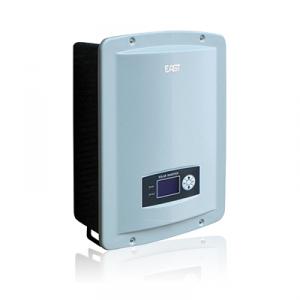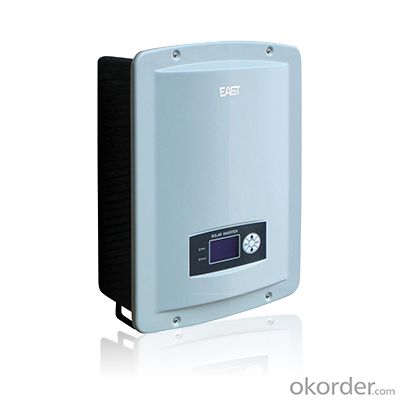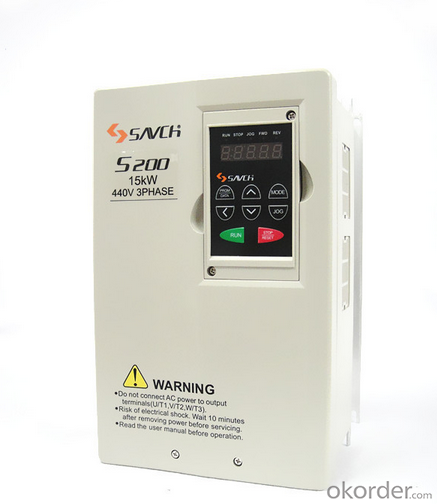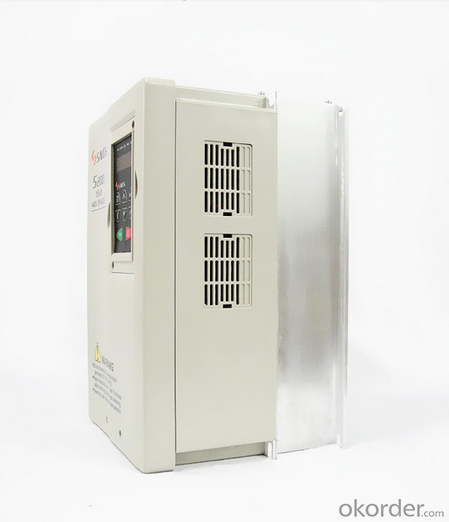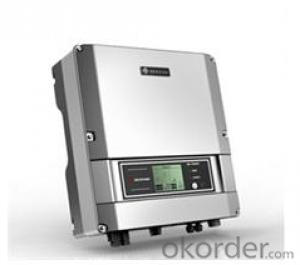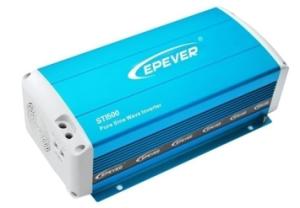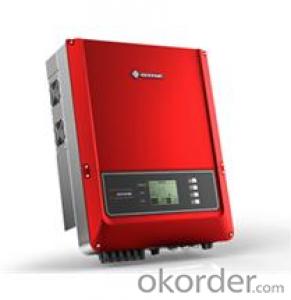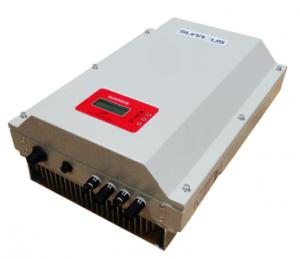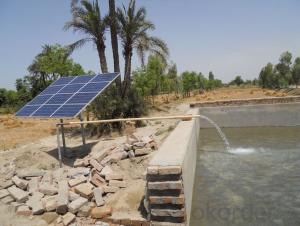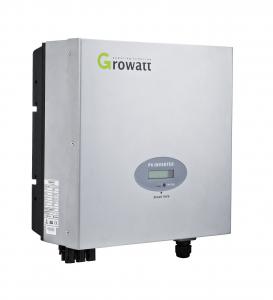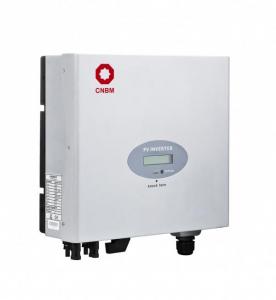Trina Solar Inverter for Residential and Small Commercial PV Installations
- Loading Port:
- China main port
- Payment Terms:
- TT or LC
- Min Order Qty:
- 10 carton
- Supply Capability:
- 20000 carton/month
OKorder Service Pledge
OKorder Financial Service
You Might Also Like
EA4KDL/EA4K6DL/EA5KDL/EA6KDL
EA4KDL / EA5KDL / EA6KDL is designed for residential and small commercial PV installations. This inverter has dual input section to process two strings with independent MPPT, high speed and precise MPPT algorithm for real-time power tracking and energy harvesting, as well as transformerless operation for high performance efficiencies of up to 97.5%. The wide input voltage range makes the inverter suitable to low power installations with reduced string size. This outdoor inverter has been designed as a completely sealed unit to withstand the harshest environmental conditions.
● Transformerless, maximum efficiency up to 97.5%
● Dual input sections with independent MPP tracking, allows optimal energy harvesting from two sub-arrays oriented in different directions
● Wide MPPT range, convenient for module configuration
● High speed and precise MPPT algorithm for real time power tracking and improved energy harvesting
● High reliability with full protective functions
● Ideal for outdoor installations
● Water-proof direct plug-in terminals
● Multilingual LCD, easy to operate
● Integrated multi-communication interfaces, easy to monitor
● TÜV, AS4777, CE, CQC certification
Specification/Type | EA4KDL | EA4K6DL | EA5KDL | EA6KDL |
Input (DC) | ||||
Max DC Power | 4400Wp | 5000Wp | 5500Wp | 6600Wp |
Max DC Voltage | 520V | 520V | 520V | 520V |
Recommend PV Array DC Voltage | 480V | 480V | 480V | 480V |
Full-load MPPT Voltage Range | 180-420V | 180-420V | 180-420V | 180-420V |
Number of Independent MPPT | 2 | 2 | 2 | 2 |
Max DC Current for Each MPPT | 12A | 14A | 15A | 18A |
Number of DC Inputs | 4(2 for each MPPT) | 4(2 for each MPPT) | 4(2 for each MPPT) | 4(2 for each MPPT) |
MPPT Efficiency (Static) | 99.5% | 99.5% | 99.5% | 99.5% |
Output (AC) | ||||
Nominal AC Power | 4000W | 4600W | 5000W | 6000W |
Nominal AC Voltage | 230Vac | 230Vac | 230Vac | 230Vac |
Nominal AC Current | 18A | 20A | 22A | 26A |
Nominal Frequency | 50Hz/60Hz | |||
Frequency Tolerance Range | 47.5-50.2Hz/57.5-60.2Hz | |||
Distortion (THD) | <3% (at rated power) | |||
Output DC Current Injection | <0.5% (at rated current) | |||
Power Factor (Cos phi) | >0.99 | |||
Number of Grid Phases | 1 | |||
System Parameters | ||||
Max Efficiency | 97.6% | 97.6% | 97.6% | 98.6% |
Euro Efficiency | 97.0% | 97.0% | 97.0% | 97.3% |
Night Consumption | 0W | |||
Topology | Transformerless | |||
Acoustic Noise Level | 50dB(A) | |||
Operation Temperature Range | -20℃~+60℃ | |||
Relative Humidity | 4~100%(no condensation) | |||
Protection Type | IP65 | |||
Above Sea Level | 1000m | |||
Structure Parameters | ||||
Dimensions(W×D×H) | 450×200×540mm | |||
Weight | 25kg | 25kg | 28kg | 28kg |
Others | ||||
Communication | RS485,USB(Optional),Ethernet (Optional) | |||
Display | Wide-screen LCD | |||
· Q. What's lifetime of a UPS ?
Most plug-in UPS are workable for at least five years. We'd advise you to change the batteries every three to four years. For larger equipment, we maintain equipment for twenty years old and still going strong.
· Q. How to maintain a UPS ?
There are three simple methods: Never overload your UPS, never connect any home electronic devices such as cooling fan to your UPS. This may cause malfunction of your UPS. Discharge the battery in a consistent interval, once a month or once two months. You can do this by turning on the UPS without connecting the mains.
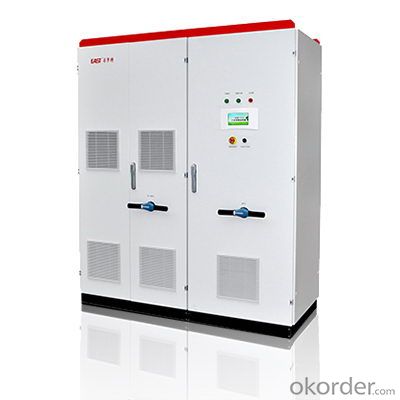

- Q: How does the harmonic distortion affect the performance of a solar inverter?
- Harmonic distortion affects the performance of a solar inverter by introducing unwanted frequencies and distortion in the output waveform. This can lead to reduced efficiency, increased power losses, and potential damage to connected electrical devices. It can also cause electromagnetic interference and compatibility issues with the utility grid or other connected systems. Therefore, minimizing harmonic distortion is crucial to ensure optimal performance and reliable operation of a solar inverter.
- Q: Are there any limitations on the number of solar panels that can be connected to a single inverter?
- The number of solar panels that can be connected to a single inverter is limited. Various factors, such as the inverter's power rating, the voltage and current ratings of the panels, and the system's configuration, determine the maximum number of panels that can be connected. In general, the inverter should be able to handle the combined power output of all the connected panels. If the panels generate more power than the inverter can handle, it can lead to inefficiencies, reduced performance, or damage to the inverter. Moreover, the panels' voltage and current ratings should be within the acceptable range of the inverter. If the panels exceed the inverter's safe limits, it can lead to overloading or malfunctioning. Furthermore, the configuration of the panels is also important in determining the limitations. Panels can be connected in series or parallel, each with its own requirements and limitations. The inverter must be compatible with the specific configuration used. To ensure proper functioning and optimal performance, it is advisable to refer to the manufacturer's guidelines and specifications for both the solar panels and the inverter. These guidelines provide information on the maximum number of panels that can be connected to a single inverter, as well as any other specific limitations or requirements to consider.
- Q: Photovoltaic grid-connected inverter without DC emc how will happen
- by means of energy converters can be converted into electrical energy. The process of converting light energy directly into electrical energy is precisely the response to photovoltaic effects. Without the need for any other mechanical parts, the energy in
- Q: What are the potential risks of overloading a solar inverter?
- Overloading a solar inverter can lead to several potential risks. Firstly, it can cause the inverter to overheat, which can result in damage to the internal components and reduce its lifespan. Secondly, overloading can cause the inverter to shut down or trip, interrupting the solar power generation and potentially causing a power outage. Additionally, overloading the inverter may also compromise the safety of the electrical system, increasing the risk of electrical fires or other hazards. Therefore, it is important to ensure that the solar inverter is properly sized and not overloaded to avoid these potential risks.
- Q: Can a solar inverter be used in a three-phase power system?
- Yes, a solar inverter can be used in a three-phase power system. In fact, there are specific types of solar inverters designed to work with three-phase power systems. These inverters are capable of converting the DC power generated by solar panels into AC power, which can be seamlessly integrated into the three-phase power grid.
- Q: Can a solar inverter be used with a solar air conditioning system?
- Yes, a solar inverter can be used with a solar air conditioning system. A solar inverter is responsible for converting the direct current (DC) electricity produced by solar panels into alternating current (AC) electricity that can be used to power household appliances, including air conditioning systems. By connecting a solar inverter to a solar air conditioning system, the energy generated by the solar panels can be efficiently utilized to cool the environment. This not only maximizes the use of renewable energy but also helps in reducing electricity costs and minimizing the carbon footprint.
- Q: Can a solar inverter be used with a generator as a backup power source?
- Yes, a solar inverter can be used with a generator as a backup power source. The solar inverter can be connected to the generator's output, allowing it to convert the generator's AC power into usable DC power for charging the batteries or powering the solar energy system. This setup ensures uninterrupted power supply during periods of low solar generation or in case of power outages.
- Q: Can a solar inverter be connected to a computer or smartphone?
- Yes, a solar inverter can be connected to a computer or smartphone. Many modern solar inverters come with built-in Wi-Fi or Bluetooth capabilities that allow them to connect to these devices. Through dedicated mobile apps or software, users can monitor their solar system's performance, adjust settings, and receive real-time data and alerts directly on their computer or smartphone.
- Q: What is the maximum efficiency rating of a solar inverter?
- The maximum efficiency rating of a solar inverter can vary, but typically it ranges between 95% and 98%.
- Q: Are there any government incentives available for solar inverters?
- Yes, there are government incentives available for solar inverters. These incentives vary by country and region, but often include tax credits, grants, and rebates to encourage the adoption of solar energy. It is recommended to check with local authorities or consult a solar energy professional to determine the specific incentives available in a particular area.
Send your message to us
Trina Solar Inverter for Residential and Small Commercial PV Installations
- Loading Port:
- China main port
- Payment Terms:
- TT or LC
- Min Order Qty:
- 10 carton
- Supply Capability:
- 20000 carton/month
OKorder Service Pledge
OKorder Financial Service
Similar products
Hot products
Hot Searches
Related keywords
